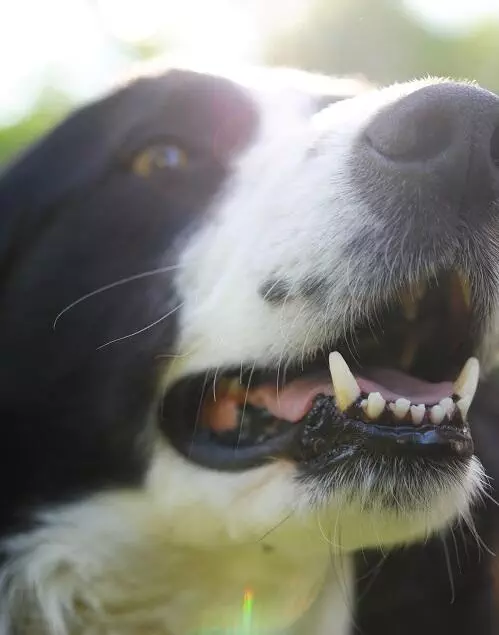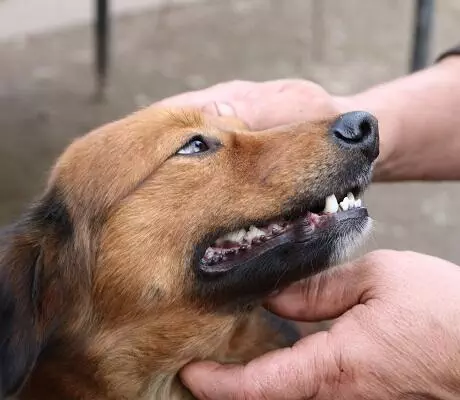They often say prevention is better than a cure. Luckily, dental diseases in dogs are easy to spot relatively early on.
Periodontal disease, otherwise known as gum disease, is one of the most diagnosed diseases in dogs. In fact, around 80% of dogs will have some form of dental disease by the age of 2, which is pretty young. They also surprisingly have a lot of teeth, so there’s a high risk that at least some will be affected.
While there are ways to control it, the good news is that it is also completely preventable if you know the early signs. Here is our guide to periodontal disease in dogs.
What is canine periodontal disease?
‘Periodontal’ refers to the periodontium (the structure that supports a tooth). So, periodontal disease in dogs is technically a disease of the gums and inflammation of the tissue around the teeth. While this sounds like it doesn’t actually affect the teeth as such, it does get worse over time.
It starts with inflammation of the gums, then extends to the tissue around the teeth, before affecting the bones if it hasn’t been controlled by this stage.
What causes periodontal disease in dogs?
Like with human teeth, bad bacteria is the main culprit. This bacteria builds up on the teeth, causing plaque.
Plaque is a sticky film of bacteria which sits on the surface of a tooth
The body will try to fight off this plaque, as a ‘foreign body’. It sends white blood cells to the gums, but this causes inflammation. This is called gingivitis.
If left untreated, the plaque hardens, turning into tartar, or calculus to give it the more technical term. This creates a rough surface, meaning future bad bacteria has an even easier surface to stick to. More plaque builds up, and then your dog is stuck in a never-ending cycle.
The longer this continues while untreated, the more difficult it can be to remove the plaque and tartar. The gums around your dog’s teeth can also become inflamed and painful. Gum disease can cause early tooth loss in dogs, too.
Diet
Your dog’s diet could further encourage periodontal disease. Dogs fed with an exclusively wet diet are said to be more prone to dental issues, as there is nothing ‘hard’ to keep the teeth strong.

Breed
Certain breeds can be more prone to dental disease in general, including:
- Flat-faced (brachycephalic) breeds
- Toy breeds
- Boxers
- Border Collies
- Greyhounds
- Dachshunds
Flat-faced breeds, such as Pugs, Shih Tzu’s and Bulldogs, are prone to malocclusions. This is when the teeth are not aligned, so they can suffer from overbites or underbites. Their teeth can crash into each other when eating. They also have to fit the regular 42 teeth into a smaller space due to their shorter snouts. Overcrowded teeth can also cause food to build up, and it can make it harder for owners to clean their teeth at home.
Overcrowding is also why Toy breeds can be at high risk. Teeth can erupt over one another or at angles, which means keeping them clean at home is difficult. Some can even retain their baby teeth, which should all have been lost before the age of one.
Boxers are also brachycephalic, but in addition, are also prone to some genetic issues. Supernumerary (additional) teeth growth, impacted teeth which cause cysts and weakened jawbones, gingival hyperplasia (excessive overgrowth of the gums) and Fibromatous epulis tumour growth are all common health issues.
Border Collies are prone to Raine syndrome, also known as dental hypomineralisation. This is a genetic condition that causes their teeth to be weaker than usual. Tooth damage and wear are therefore common, and they can also have overbites too.
Greyhounds have been found to be 39% more prone to dental disease, although the reasons why are inconclusive. Dachshunds also have smaller mouths but are seen as one of the most common breeds to be suffering from periodontal disease.
Age
Older dogs are more prone to most illnesses, not just dental conditions. It makes sense that a dog with more life experience will have more natural plaque and dental issues. Regular checkups and teeth cleaning is vital at their later stage of life.
How do I prevent periodontal disease in dogs?
Try to check your dog’s teeth and gums at least once per week, when they’re having their general check over for lumps and other issues.
There are certain foods and treats which can help to reduce plaque build-up. Dental chews are designed to really need to be chewed by dogs, and their shape often means they are more likely to rub on the surface of the teeth, wiping away early stage plaque.
Dog toothbrushes and toothpaste are also available. It can be hard for owners to clean their dog’s teeth, whether through fidgeting, behaviour or simply their teeth shape (as discussed above). But if you have your dog from a puppy, it is really crucial to get them used to this.
Powders which are sprinkled on a dog’s food and liquids which go into their drinking water are also available but they won’t tackle serious cases of plaque as such. They’re mostly for bad breath.
Some breeds who are more prone to dental disease may also benefit from regular teeth cleaning under anaesthesia at the vet, for a deeper clean. Any breeds with smaller mouths and very crowded jaws could also benefit from early intervention in the form of teeth removal.

Spotting the early signs of dog dental disease
Unfortunately, too many of us don’t regularly look at our dog’s mouths often. Therefore, most disease is spotted too late to reverse easily. Some of the earliest signs that something is wrong include:
- Swollen gums
- Staining on teeth
- Bad breath
- Reddened gums
Advanced stages of periodontal disease, where vet intervention is an absolute necessity, include:
- Drooling
- Struggle chewing
- Chewing on one side of the mouth
- Bleeding gums
- Preferring soft food
- Dropping food when eating to come back to it
- Taking longer to chew food
- Becoming head shy (not allowing you to check their teeth)
- Receding gums
- Swelling on the face
Periodontal disease may be painful for a dog, but they can’t easily tell you. And as most dogs have big appetites, they aren’t easily put off food. You may just think they are being picky. This is why regular checks are so vital.
Can periodontal disease in dogs be treated?
Many dog insurance plans won’t cover treatment for dental issues, so it could end up all being expensive to sort
Unfortunately, once tartar is present, your dog’s teeth will likely need a professional clean. This involves anaesthesia at the vet.
They may need to have some teeth removed if their condition is causing particular issues such as pain or inflammation.

